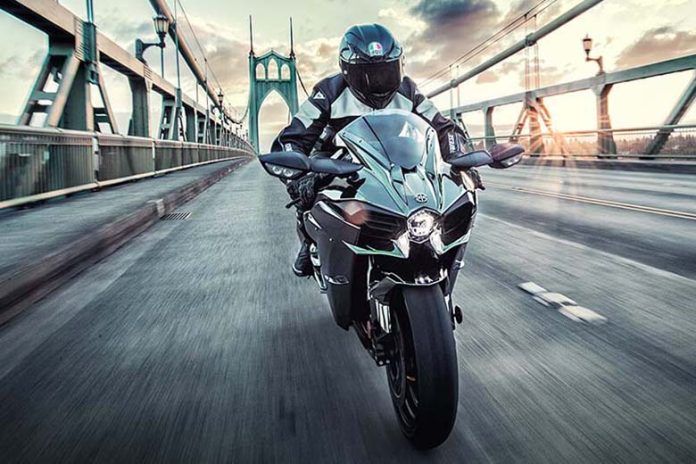It is one of the few motorcycles that genuinely deserves to be called an instant icon for pushing the limits of engineering and ultimate performance. The 2022 Kawasaki Ninja H2R Sports Motorcycle demands respect and attracts highly capable and dedicated riders thanks to its uncompromising design and the combined power of Kawasaki Heavy Industries. Ohlins rear suspension, top and bottom quick shifter, aerodynamic gadgets, cornering control, and bank angle indicators are all standard on the H2R. Play your part in history, Ninja H2R. This vehicle was not designed for use on public roads. The Kawasaki Ninja H2R is among the Top Ten High-Speed Motorcycles, Top Ten Fastest Super Motorcycles in India and Top Ten Bikes With More Than 175MPH Speed as well.
The 2022 Kawasaki Ninja H2R Sports Motorcycle, 2022 Kawasaki Ninja H2 and 2022 Kawasaki Ninja H2 Carbon has surpassed any other Kawasaki motorcycle in development. Thanks to the unparalleled collaboration between the various divisions within the Kawasaki Heavy Industries, Limited (KHI) organization, the world’s only limited production supercharged hypersport model represents the rampant rise of Kawasaki engineering, with fantastic speed and mind-bending High speed is only suitable for tracks.
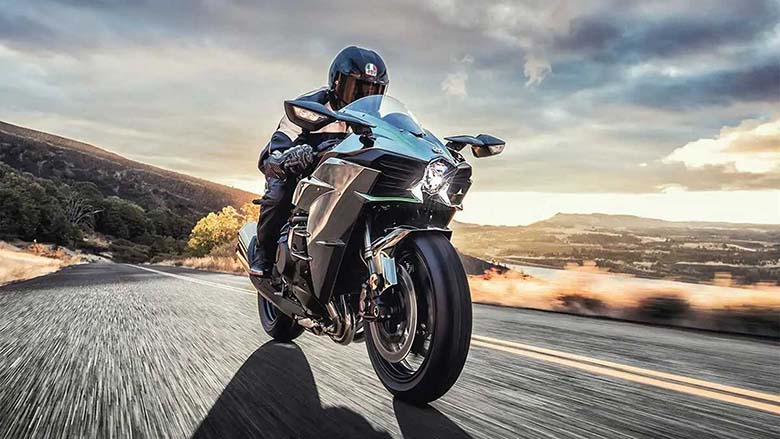
2022 Kawasaki Ninja H2R Sports Motorcycle – Features and Specs
Economical Riding Indicator
Kawasaki bikes can easily reach the highest fuel efficiency level thanks to the management of ultra-precision electronic engines. However, gear selection, throttle usage, and other factors controlling the rider significantly affect fuel consumption. The Economic Riding Indicator is a feature that shows when current riding conditions are used. The instrument analyzes fuel usage regardless of vehicle speed, throttle position, engine speed, or other riding conditions. An all-new “ECO” indicator appears on the instrument panel’s LCD when the fuel consumption for a particular speed is slow (i.e., the fuel efficiency is high). Fuel consumption can be further reduced by riding with the “ECO” signal on.
Electronic Throttle Valves
With Kawasaki’s fully electronic throttle activation system, the ECU can manage the fuel volume and air delivered to the engine. Excellent fuel injection and throttle valve position achieve smooth, natural engine response and optimal performance. Technology also plays a vital role in decreasing emissions.
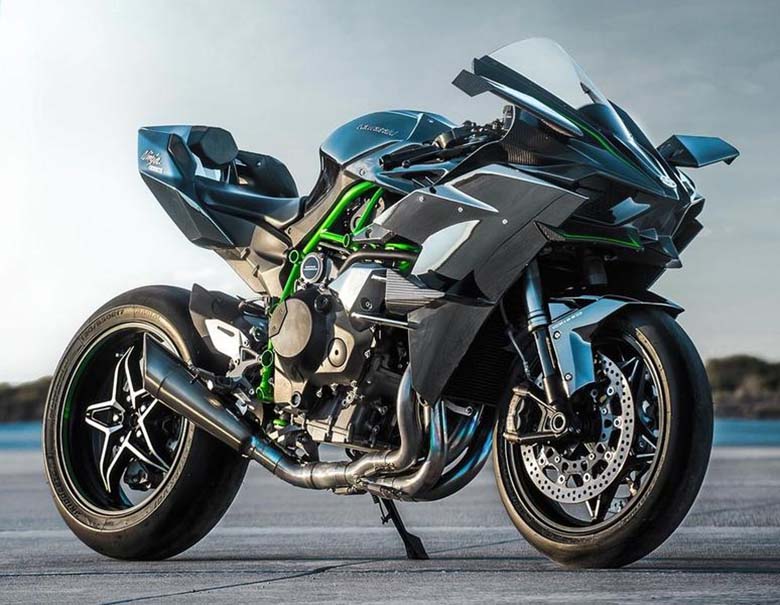
Electronic throttle valves allow for the debut of precise management of electronic engine management systems like S-KTRC and KTRC and electronic systems like KLCM and electronic cruise control.
KLCM (Kawasaki Launch Control Mode)
The KLCM automatically controls the engine’s output to prevent the wheel from spinning and assists riders by improving stop-to-acceleration. When the clutch lever is pushed in and the system is turned on, the engine speed is limited to a specific rate while the rider retains full power. The engine speed is allowed to increase once the rider releases the clutch lever to attach the clutch, but the emphasis is adjusted to prevent the wheel from spinning and to keep the front wheel on the ground. The device automatically disconnects when the rider enters third gear or reaches a certain speed. Riders can choose from various settings depending on the model, each with gradually advanced interference.
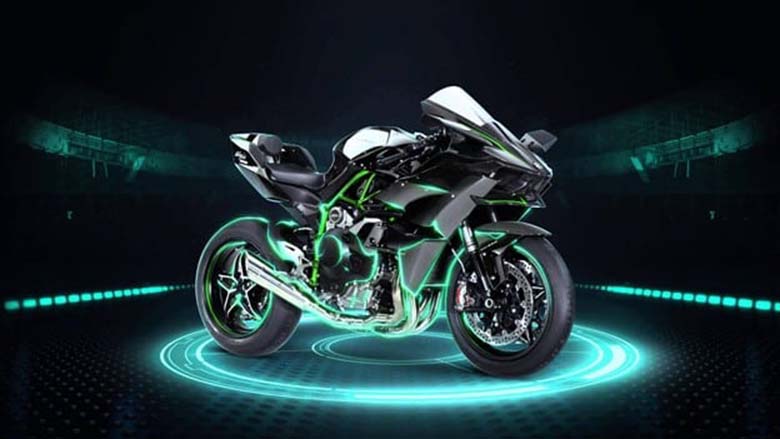
KCMF
KCMF (Kawasaki Cornering Management Function) monitors engine and chassis parameters throughout the corner – from start to stop – modulates brake force and engine power to help braking from acceleration and re-smoothing, and riders Assist in locating the desired line.
Kawasaki Traction Control
KTRC: Kawasaki’s innovative traction control technology enhances sports riding performance and gives inner peace of mind when riding in slippery conditions. Multiple rider selectable modes offer a gradual high level of interference depending on the riders preference and track conditions better than the previous 2021 Kawasaki Ninja H2R model.
Less invasive settings allow traction at bay when cornering. They were designed with sport riding in mind, and they help you accelerate out of the turn by improving the rear wheel forward drive.
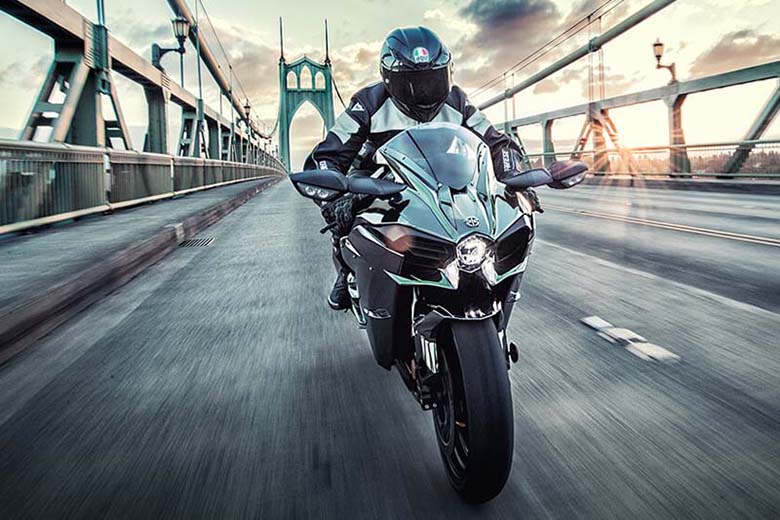
Supercharged Engine
Based on information and technology from Kawasaki Heavy Industries, Limited (KHI), Kawasaki’s supercharged engine produces superior engines while maintaining a compact design. The engine’s supercharger – a motorcycle-specific device built entirely indoors using technology from the Kawasaki Gas Turbine & Machinery Company, the Aerospace Company, and the Corporate Technology Division – achieves this outstanding performance is the key.
The most important advantage of designing an in-house supercharger and adapting it to engine features was that engineers could achieve high-performance operation under a wide range of conditions, which would not be possible if an aftermarket automotive Vehicle was dropped or molded.
KQS
KQS (Kawasaki Quick Shifter) acknowledges that the shift lever is activated and sends a signal to the ECU to cut off the ignition so that the next consecutive gear can be applied without engaging the clutch, allowing riders to enhance their speed on the track. On motorcycles without a clutch downshift, the technology automatically adjusts the speed of engine while slowing down so that the next lower gear can be lifted without using the clutch.
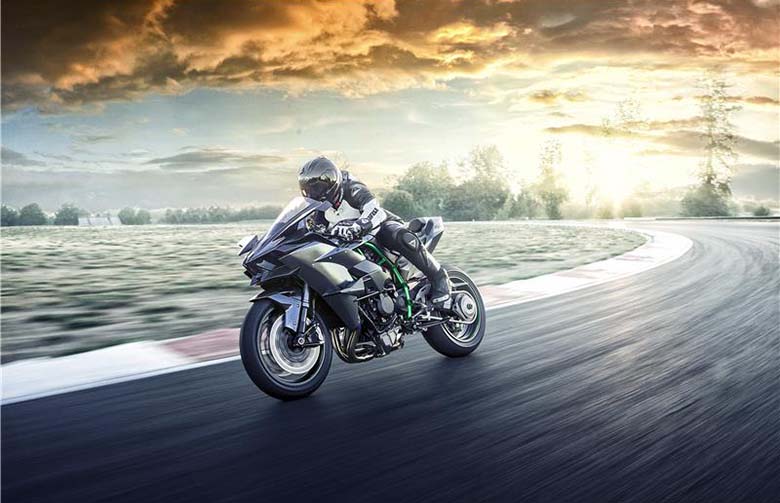
Silver-Mirror Paint
Kawasaki’s high-quality original paint has a gleaming, glass-like metal finish. It debuted on the 2015 Ninja H2TM and Ninja H2TMR, the first to be used on a mass-production vehicle in the automotive or motorcycle industries.
Its main coat of paint looks like paint, but once exposed to sunlight, its highly reflective surface takes on the shape of the surrounding environment. The bodywork sculpture contour on which the color is placed is marked by the significant difference in how the paint appears in light and shadow. The silver mirror reaction (cam) creates a highly reflective surface.
KIBS
Kawasaki has designed the KIBS (Kawasaki Intelligent anti-lock Brake System) to accommodate the supersport bike’s awesome handling features, which offer highly efficient brakes with little interference during the ride. The ABS ECU (Electronic Control Unit) and an engine ECU are linked for the first time in a mass-production brake system.
The KIBS front brake caliper estimates rear and front wheel speeds in addition to hydraulic pressure, engine speed, throttle position, clutch activation, and gear position. All this data is checked to establish the proper hydraulic pressure for front brakes.
IMU-Enhanced Chassis Orientation Awareness
The sophisticated programming that gives the ECU a precise picture of what the chassis is doing has always been the power of Kawasaki’s state-of-the-art electronics. The Magic Formula tire model is used skillfully through Kawasaki’s dynamic modeling program as it monitors changes in many parameters, allowing it to track changing road and tire conditions.
Installation of IMU (Inertial Measurement Unit) allows monitoring of inertia with 6 DOF (Degree of Independence).
2022 Kawasaki Ninja H2R Sports Motorcycle – Price
The new 2022 Kawasaki Ninja H2R Sports Motorcycle is available at $56,500 only.

2022 Kawasaki Ninja H2R Sports Motorcycle – Technical Specifications
Power
| Engine | 998cc, 4-stroke, liquid-cooled, DOHC 16-valve in-line four |
| Bore x Stroke | 76mm x 55mm |
| Compression Ratio | 8.3:1 |
| Fuel System | Fuel injection: 50mm x 4 featuring dual injection |
| Intake System | Kawasaki Supercharger |
| Ignition | Digital |
| Starting | Electric |
| Lubrication | Forced lubrication, wet sump with oil cooler |
| Transmission | 6-speed, return |
| Clutch | Wet multi-disc, manual |
| Final Drive | Chain |
Performance
| Frame | Trellis, high-tensile steel, including Swingarm Mounting Plate |
| Front Suspension / Wheel Travel | 43mm inverted fork including rebound and compression damping, spring preload adjustability, & top-out springs / 120mm (4.7 inches) |
| Rear Suspension / Wheel Travel | New Uni Trak, Öhlins TTX36 gas-charged shock including piggyback reservoir, compression, and rebound damping spring preload adjustability, and top-out spring / 135mm (5.3 inches) |
| Rake / Trail | 25.1° / 108 mm |
| Steering Angle (L/R) | 27° / 27° |
| Front Tire | 120/600 R17 |
| Rear Tire | 190/650 R17 |
| Front Brakes | Dual semi-floating ø330 mm Brembo discs with radial mount, All-new brembo Stylema monobloc, opposed 4-piston calipers |
| Rear Brake | All-new 250 mm disc with Brembo opposed 2-piston caliper |
Details
| Dimensions (L x W x H) | 2,070 mm x 850 mm x 1,160 mm (81.5 in x 33.5 in x 45.7 in) |
| Wheelbase | 1,450 mm (57.1 in) |
| Road Clearance | 130 mm (5.1 in) |
| Seat Height | 830 mm (32.7 in) |
| Curb Mass | 216 kg (476 lb) |
| Fuel Capacity | 17 litres |
| Instrumentation | Analogue-style tachometer + full-digital LCD screen with digital speedometer, gear position indicator, odometer, dual trip meters, current mileage, average mileage, fuel consumption, coolant temperature, boost indicator, boost (intake air chamber) temperature, stopwatch (lap timer), and clock |

